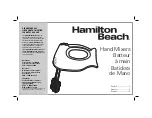
9
The OUT1 output (56, 57) is balanced or symmetrical, and the pin-out of the
connector is as follows:
Hot or direct signal
>
Pin 2
Cold or inverted signal
>
Pin 3
Ground
>
Pin 1
The balanced circuit simulates an output transformer, so if you wish to use OUT1 in
non-balanced mode, you should short circuit the unused pin to ground. Otherwise, the signal
will not have an appropriate level and quality.
The OUT2 output (58) is non-balanced or asymmetrical.
The MAC90v has two recording outputs: REC1 (52), which is pre-talkover, i.e. no
signals which activate the talkover (both XF buttons pressed and MIC indicator lit) are passed
to this output, so no attenuation occurs, and REC2 (54), which is influenced by the talkover.
Finally, a MONO (30) switch that converts an stereo signal into a monophonic one or
sends one side to both channels. This switch affects the outputs OUT1, OUT2, and REC2.
AUX OUT (53) provides an output for the auxiliary bus (see paragraph 4.5).
The CUE output (55) allows for easy monitoring along with an external amplification
system and carries the very same signal as the HEADPHONES output.
5. CONSIDERATIONS
5.1. Ground loops, background noise
You should always make sure that the signal sources coming to the unit, as well as all
devices connected to its outputs, do not have their grounds interconnected, that is; ground must
never come from two different devices. Should this ever happen, noises could occur and seriously
interfere the sound quality.
Cable shielding, when connected to the chassis, must never be interconnected, so as to
avoid ground loops.
The MAC90v mixer has been designed for the lowest possible background noise.
Independently from the electronic design itself, background noise level will directly depend on the
right installation and use of the mixing unit.
I. e.: setting a channel VOL to "2" and the output to "10" is not the same as the other
way round. In the first case, the signal coming to the mixing amplifier - which has got its own
noise - is low, and so is the signal-to-noise ratio (low signal). When the output amplifier boosts the
whole signal we will get a very high background noise. In the second case - with the channel
fader at maximum - the mixing level is high, and so is the signal-to-noise ratio. When the signal
reaches the VOL OUTPUT and is boosted, it will keep a much better signal-to-noise ratio than in
the preceding case.
5.2. Cleaning
The front panel should not be cleaned with dissolvent or abrasive substances because
silk-printing could be damaged. To clean it, use a soft cloth slightly wet with water and neutral
liquid soap; dry it with a clean cloth. Be careful that water never gets into the amplifier through
the holes of the front panel.










































